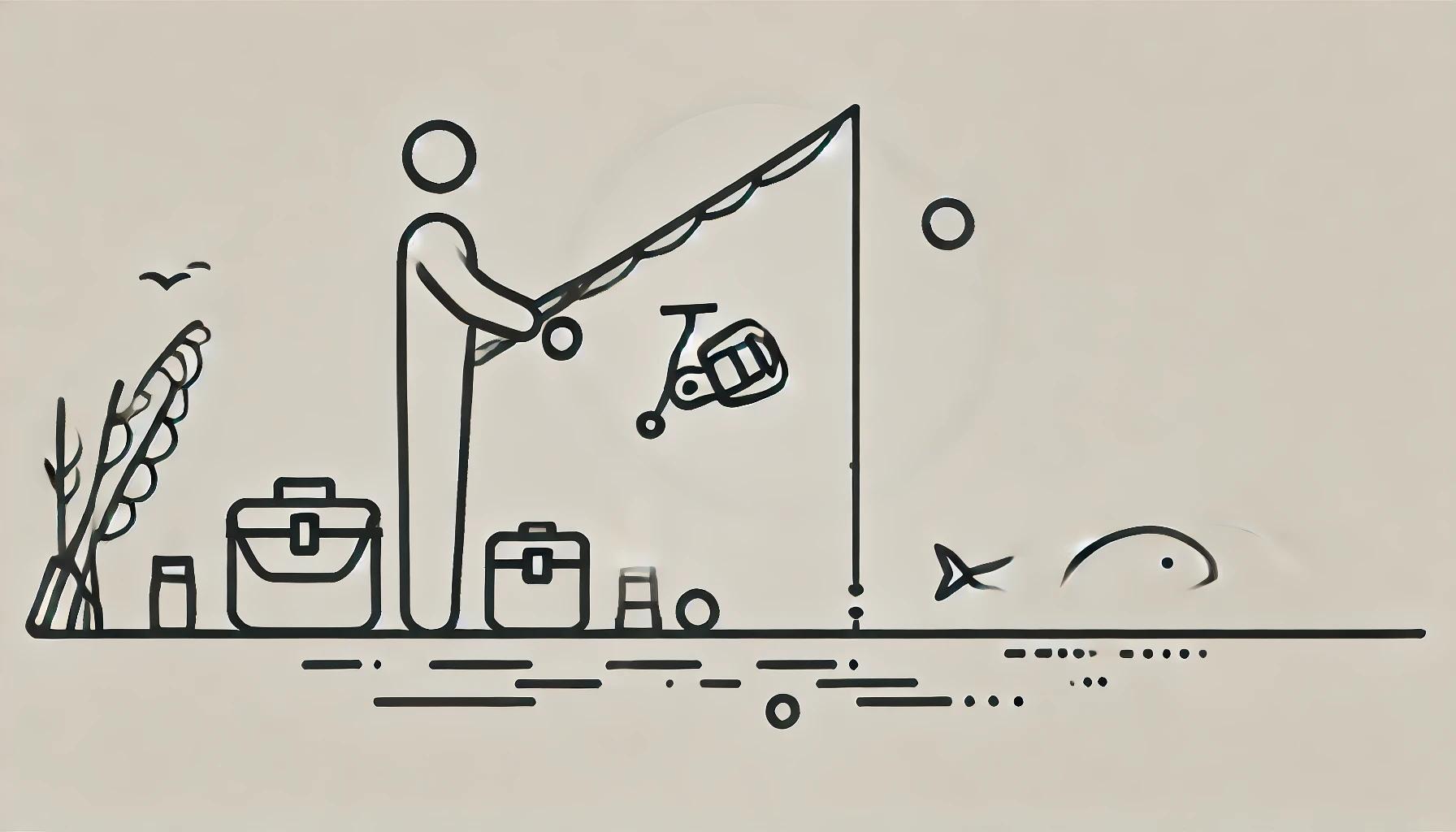Fishing is a relaxing and rewarding outdoor activity that allows you to connect with nature, unwind, and potentially catch your own fresh meal. If you’re new to fishing, this guide will help you get started with the basics, from selecting gear to learning essential techniques and understanding the best practices for catching your first fish.
The Benefits of Fishing
Fishing offers numerous benefits:
- Relaxation: The calming environment and rhythmic motions of fishing can reduce stress and promote mental well-being.
- Physical Activity: Fishing involves various physical activities such as casting, reeling, and walking to fishing spots.
- Connection with Nature: Spending time outdoors enhances your appreciation for the natural world and wildlife.
- Skill Development: Fishing improves hand-eye coordination, patience, and problem-solving skills.
Getting Started
Choosing the Right Gear
Start with basic gear that is suitable for beginners:
- Fishing Rod and Reel: A medium-action rod with a spinning reel is versatile and easy to use for beginners.
- Fishing Line: Monofilament line in the 6-12 lb test range is suitable for most freshwater fishing.
- Hooks: Size 6-10 hooks are a good choice for beginners targeting various fish species.
- Bobbers and Sinkers: Use bobbers to keep your bait at the desired depth and sinkers to add weight for casting.
- Bait: Live bait such as worms, minnows, and insects are effective for beginners. Artificial lures can also be used.
Selecting a Fishing Spot
Choose a location that is accessible and known for good fishing:
- Local Lakes and Ponds: These are great spots for beginners due to their calm waters and abundant fish populations.
- Rivers and Streams: Look for areas with slow-moving water, such as pools and eddies, where fish are likely to gather.
- Public Fishing Piers: These provide easy access to fishing without the need for a boat.
Learning the Basics
Casting
Practice your casting technique to ensure you can place your bait accurately:
- Overhead Cast: Hold the rod with both hands, pull it back over your shoulder, and then swing it forward, releasing the line as you point the rod tip towards your target.
- Sidearm Cast: Useful for casting under obstacles, swing the rod sideways and release the line as you point towards your target.
Setting Up Your Line
Properly set up your fishing line for the best chance of catching fish:
- Attach the Hook: Tie the hook to the end of your line using a secure knot, such as the improved clinch knot.
- Add a Bobber and Sinker: Place the bobber a few feet above the hook to keep the bait at the right depth. Attach a sinker below the bobber to add weight.
- Bait the Hook: Thread the bait onto the hook, ensuring it is securely attached but still allows the hook to be visible.
Learning Fishing Techniques
Patience and Observation
Fishing requires patience and attentiveness:
- Stay Quiet: Avoid making loud noises that can scare fish away.
- Watch the Bobber: Keep an eye on the bobber for any movements indicating a bite.
Hooking and Reeling In
When you feel a bite, follow these steps to hook and reel in the fish:
- Setting the Hook: Quickly lift the rod tip to set the hook in the fish’s mouth.
- Reeling In: Maintain tension on the line and steadily reel in the fish. Avoid jerking the rod to prevent the fish from escaping.
- Landing the Fish: Once the fish is close, use a net to scoop it out of the water or carefully lift it with your hands.
Best Practices for Beginners
Follow Regulations
Ensure you follow local fishing regulations:
- Licenses: Obtain the necessary fishing licenses and permits for your area.
- Size and Bag Limits: Be aware of size and bag limits for different fish species to promote sustainable fishing.
Practice Catch and Release
If you’re not planning to keep the fish, practice catch and release:
- Handle with Care: Wet your hands before handling the fish to protect its slime coat. Avoid touching the gills and eyes.
- Quick Release: Remove the hook gently and release the fish back into the water as quickly as possible.
Safety Tips
Prioritize safety while fishing:
- Wear a Life Jacket: If fishing from a boat or near deep water, always wear a life jacket.
- Protective Gear: Wear sunscreen, a hat, and sunglasses to protect yourself from the sun.
- Stay Hydrated: Bring plenty of water, especially on hot days.
Conclusion
Fishing is a fantastic hobby that offers relaxation, excitement, and a chance to connect with nature. By choosing the right gear, learning basic techniques, and practicing patience and observation, you can successfully catch your first fish and enjoy the many benefits that fishing has to offer. So grab your fishing rod, head to your favorite spot, and experience the thrill of fishing. Happy angling!

Leave a Reply